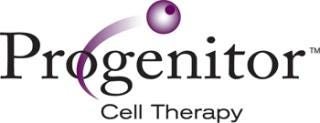Bench to BedsideBench to Bedside
August 1, 2011

Over the past decade, the cell therapy field has matured into the next generation of medical technology. In both the United States and the European Union, physicians now have an option to write prescriptions for manufactured engineered cell therapeutics, as they routinely do for prescription medications. And the number of available commercial cell therapies is expected to grow. However, unlike traditional pharmaceuticals, engineered cell therapeutics require geographically dispersed networks of cell collection, engineering, manufacture, distribution logistics, and treatment facilities, thus presenting a yet unseen set of challenges for those involved in cell therapy development and commercialization. Development teams must design and support clinical trials; optimize economics, manufacturing capacities, and distribution logistics; manage evolving regulatory framework; and work to develop and strengthen the IP claims vital to future commercial success. From the early stages, cell therapy must be developed with commercialization in mind. But what does this mean in practical terms? It means that phase-appropriate choices should be made, allowing the greatest flexibility and contingency options as the development process moves toward commercialization.
Research and Development (R&D) needs to lay down a strong foundation upon which the commercial therapeutic product will be built. Aside from developing basic scientific framework and securing strong IP claims, successful R&D needs to provide early product (cell type, function) and manufacturing process (cell culture protocols, raw materials, freezing) definition, while building a platform for analytical development, with methodologies and data providing early product characterization profile (through identity, purity, stability, and potency).
GMP Process Development transforms the R&D process into a cGMP-compliant, robust, and controlled manufacturing platform, scalable to meet the increasing demands of commercialization. The cGMP process is developed through introduction of compliant raw materials, functionally closed manufacturing platform, freezing, storage, and shipping processes, whereas analytical methods are developed by establishing prospective criteria, limits, detection range, robustness, and linearity. Furthermore, the product characterization profile (safety, identity, purity, specificity, and potency) and the overarching Quality Systems (raw material specifications and testing, process-related SOPs, analytical method SOPs, BPR) are introduced. Additionally, regulatory filings (pre-IND and IND) are prepared, and necessary supporting GLP studies (toxicology, tumorgenicity, route of administration) are executed, to define the manufacturing process.
GMP Process Qualification provides the formal definition of the cGMP manufacturing process (and the resulting product), while also demonstrating the efficacy, reproducibility, consistency, robustness, and safety of the process, product, and analytical methods. Before the actual PQ activities, the GMP manufacturing process must be fully defined and “locked-down” (final versions of SOPs, BPR, GMP documentation), Phase-appropriate analytical method qualifications (prospective protocols and criteria) need to be executed, along with the validation of the cleanrooms and process-critical equipment (prospective protocols and criteria). During the actual PQ, full-scale qualifying manufacturing campaigns (locked-down process and methods, prospective protocol, and product criteria) must be executed to demonstrate GMP process/product efficacy, reproducibility, consistency, robustness, and safety. Additionally, operator validation (aseptic fill) is conducted to qualify all manufacturing staff.
During cGMP Manufacturing campaigns, the qualified process is used to produce, store, release, and deliver clinical-grade materials in a consistent, controlled, phase-appropriate manner. Manufacturing and in-process testing needs to be performed exclusively in qualified facilites, by qualified staff, under final versions of SOPs and the BPR. Product release must be conducted using qualified methods with prospectively set citeria and defined SOPs, full QA review of BPRs, and cGMP documentation. GMP-controlled product storage and distribution (using a validated method, monitoring) is to be maintained throughout the course of the manufacturing campaigns, as well as the actual clinical studies, and any long-term product stability studies.
Additionally, next-phase PD (phase-appropriate improvements in scale, efficiency, risk reduction, analytical methods, characterization profile) and requisite regulatory filings (next-phase IND, ammendments) are conducted between the phases of the clinical studies, ahead of next-phase cGMP manufacturing campaigns.
Commercialization
Ultimately, following the completion of all phases of the clinical trials, the BLA submission and approval mark the end of cell therapy product development and the beginning of commercial efforts. Successful commercialization of a cellular therapeutic product (postapproval) is largely dependent on the ability to consistently manufacture, store and distribute high quality products, with scalability and flexibilty to efficiently address developing market demands. This requires manufacturing that is scalable, robust, consistent, controlled, and efficient, with the appropriate storage (scale, control, segregation for risk mitigation) and distribution (established network, contingency plans) logistics in place.
As early as the R&D stage, the development team must consider how to secure commercial development resources and expertise required to move forward, taking into account the existing in-house resources (clinical development and regulatory expertise, manufacturing capability/capacity, storage/distribution capability). A contract manufacturing organization (CMO) can provide unique, multifaceted, cell-therapy–specific expertise and resources, essential for successful commercialization, in the form of a collaborative partnership assuring the best leverage against available in-house capabilities. CMOs must provide specific scientific/technical background, cell therapy product development and characterization experience, regulatory support, construction/validation/operation of GMP facilities, cGMP manufacturing, distribution logistics, and delivery networks. By using a CMO’s experience and capacity as required by the project timeline and fiscal/fundraising constraints, you can significantly reduce/eliminate the costs and resource demands of maintaining baseline GMP infrastructure during downtime. Additionally, CMO partner can facilitate development process integration: from ensuring seamless transition between development stages, to providing consistent quality systems capturing all stages of development, integrated manufacturing, storage and distribution, and most importantly, scalability and growth potential. So engage a CMO as early and as often as you can, throughout the commercialization process!
About the Author
Author Details
Sanjin Zvonic, PhD is director of Technology and Business Development at Progenitor Cell Therapy, 291 Bernardo Avenue, Mountain View, CA 9
4043, 650-934-8541; [email protected]; www.progenitorcelltherapy.com.
You May Also Like






